Comparing Bed Bugs and Fleas: Key Differences Explained
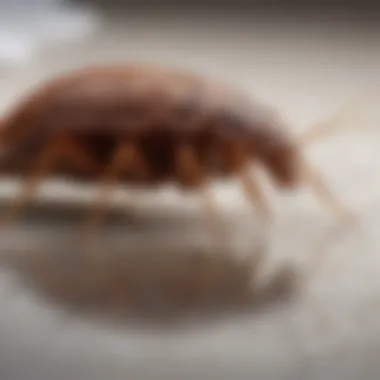
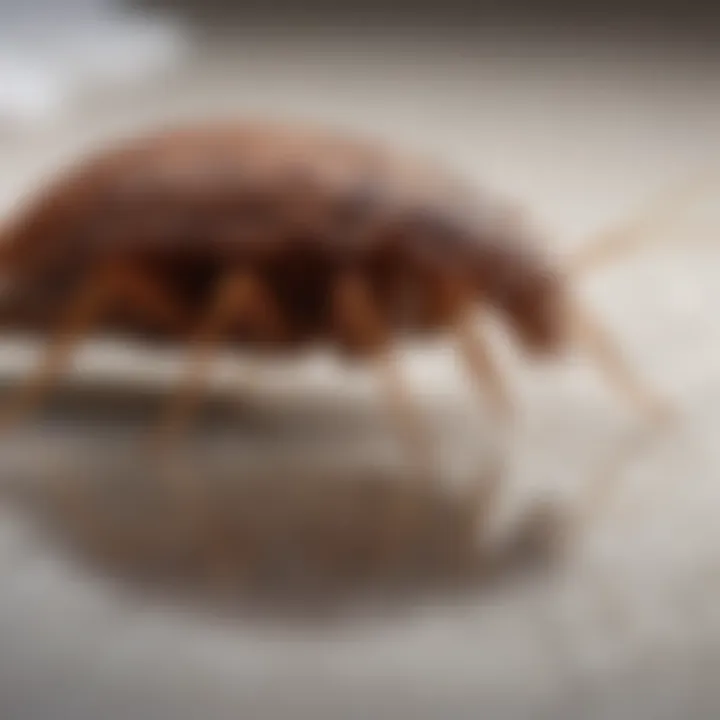
Intro
Understanding pests like bed bugs and fleas is essential for homeowners and renters alike. These two insects are not only a nuisance but can also pose significant health risks. Distinguishing between sweet smelling pests can help in implementing effective control measures. This article covers details about pest identification, prevention strategies, and treatment options associated with these common invaders. Each section will provide useful insights that can arm individuals in the ongoing battle against these infestations.
Pest Identification
Detailed descriptions of common pests
Bed Bugs: These small, reddish-brown insects measure about 4 to 5 millimeters in length. They are flat and oval-shaped, allowing them to hide easily in crevices and folds of bedding, furniture, and walls. Bed bugs feed exclusively on blood, typically at night when their hosts are asleep. Their bites can lead to itching and discomfort and may cause allergic reactions in some individuals.
Fleas: Fleas are more agile than bed bugs and can jump distances of up to 13 inches. Adult fleas are small, less than 3 millimeters long, and reddish-brown in color. They have a hard, flat body that enables them to navigate through fur or feathers. Though often found on pets, fleas can also infest homes, feeding on human blood if animals are not present.
Signs and symptoms of infestations
Bed Bugs: The first sign of an infestation might be the presence of tiny blood spots on sheets. Bites can appear as red, elevated welts on the skin, often in linear patterns. Look for shed skins and dark excrement in the seams of mattresses and folds of furniture.
Fleas: The most apparent clue of fleas is the relentless scratching of pets. Flea bites can also occur on human skin, often appearing as red, itchy spots. Flea feces, which look like small black specks, can be found in pet bedding or carpeting, indicating an infestation.
"Being able to identify the signs of bed bugs and fleas early can prevent a larger infestation down the line."
Prevention Strategies
Home maintenance tips for pest prevention
Implementing effective home maintenance practices can drastically reduce the likelihood of pests like bed bugs and fleas. Here are some key strategies:
- Sealing Entry Points: Inspect your home for gaps around windows, doors, and any potential points of entry. Sealing these can stop pests from getting in.
- Regular Cleaning: Frequent vacuuming of carpets and rugs can help remove pests and their eggs. Pay special attention to areas where pets sleep.
- Bedding Care: Regularly wash your bedding and linens in hot water to kill any potential bugs. Consider encasing mattresses in protective covers designed to prevent bed bug infestations.
Natural deterrents and barriers
In addition to structural maintenance, there are natural methods to deter these pests:
- Diatomaceous Earth: This powder can be spread in areas where bed bugs or fleas are located. It’s harmless to humans and pets but deadly to these insects.
- Essential Oils: Oils like lavender, tea tree, and peppermint can act as repellents. They can be diluted with water and sprayed around suspected areas.
Treatment Options
Overview of chemical vs. natural treatments
When faced with infestations, treatment choices vary. Chemical treatments generally involve insecticides designed to eradicate pests quickly. However, they can pose risks to human health and the environment. Natural treatments, on the other hand, tend to be safer alternatives, though they may take longer to take effect. The choice between these options depends on individual preferences and the severity of the infestation.
Step-by-step guides for DIY treatments
For Bed Bugs:
- Vacuum: Thoroughly vacuum infested areas and dispose of the vacuum bag.
- Wash: Wash bedding and clothing in hot water. Dry on high heat to kill any remaining bugs.
- Diatomaceous Earth: Sprinkle this around bed legs and other common hiding spots.
- Repeat: Regularly check for signs of resurgence.
For Fleas:
- Bathing Pets: Regularly bathe pets with flea shampoos.
- Vacuum: Vacuum all carpets and furniture, then dispose of the vacuum contents.
- Wash Bedding: Frequently wash pet bedding and any fabric that may harbor fleas.
- Treat Yard: If fleas infest the yard, consider natural repellents or consult professionals if needed.
Prelude to Common Pests
Understanding common pests like bed bugs and fleas is essential for maintaining a healthy living environment. These pests can infiltrate our homes, causing discomfort and posing health risks. This article aims to shed light on the significant characteristics and behavioral patterns of both pests. By identifying them and the issues they bring, homeowners can take effective action.
Defining Bed Bugs and Fleas
Bed bugs are small, flat, reddish-brown insects that primarily feed on human blood. They are about the size of an apple seed and are often found in bedding, furniture, and cracks in walls. In contrast, fleas are tiny, wingless insects known for their jumping ability. They are dark brown and range from 1 to 3 millimeters in size. Fleas usually infest pets, but they can also bite humans, leading to itchy, uncomfortable reactions.
Importance of Understanding Differences
Recognizing the differences between bed bugs and fleas is crucial for proper pest control. Misidentifying these pests can result in ineffective treatment strategies, leading to continued infestations. Bed bugs typically hide in bedrooms and furniture while fleas are more often found in areas where pets live and play.
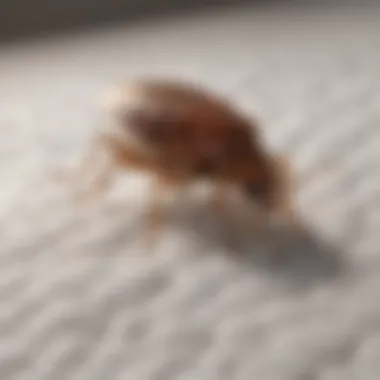

By understanding the unique characteristics of both pests, homeowners can implement tailored prevention and treatment strategies.
Additionally, understanding how each pest behaves and reproduces informs better management strategies. Bed bugs have a slower life cycle, while fleas mature more quickly and can reproduce rapidly. Awareness of these factors allows for targeted control approaches that can save time and resources. It’s essential to not only recognize these pests but also be aware of their habits and potential health risks they may pose.
Biological and Physical Characteristics
Understanding the biological and physical characteristics of bed bugs and fleas is essential for effective identification and control of these pests. By examining their physical traits and life cycles, homeowners can better recognize infestations and develop suitable strategies for prevention and treatment.
Physical Appearance
Size and Color of Bed Bugs
Bed bugs are flat, oval-shaped insects, typically measuring about 4 to 5 mm in length. Their coloration ranges from reddish-brown to mahogany, which can vary depending on their feeding state. The size and color of bed bugs help to identify them easily compared to other pests. Their distinct appearance allows individuals to detect their presence through visual inspections.
Bed bugs’ flat bodies enable them to hide in tight spaces, such as mattress seams or cracks in furniture. Their ability to fit into small crevices makes detection challenging. Moreover, their color helps them blend in with wooden surfaces and fabrics, contributing to their elusive nature. This characteristic is important for anyone dealing with potential infestations, as it underscores the need for careful monitoring of areas often frequented by these pests.
Size and Color of Fleas
Fleas are small, agile insects that typically measure about 1.5 to 3 mm long. They have a dark reddish-brown color and a laterally compressed body, which facilitates their jumping ability. The specific size and color of fleas play a crucial role in their identification and can help differentiate them from other pests.
A flea's size allows it to hide within animal fur or carpets, which poses challenges for detection until an infestation becomes significant. Their coloration, combined with their rapid movement, makes them hard to spot. Recognizing these traits can equip homeowners with the knowledge needed to catch infestations early, minimizing potential impacts.
Life Cycle
Stages of Bed Bug Development
The life cycle of bed bugs includes several stages: egg, nymph, and adult. A female bed bug can lay up to 500 eggs in her lifetime, leading to rapid population growth if not managed properly. The egg stage lasts about a week, followed by five nymph stages. Each nymph stage requires a blood meal to progress through its cycle, which can take anywhere from several weeks to a few months, depending on environmental conditions.
Understanding these stages is vital for effective pest management. Recognizing the nymphs and adults can help in identifying infestations early and applying appropriate treatments. The relatively short development time emphasizes the need for swift action once bed bugs are identified.
Stages of Flea Development
Fleas undergo a life cycle similar to that of bed bugs, consisting of egg, larva, pupa, and adult stages. A female flea can lay up to 50 eggs per day, which can lead to swift population increases. The eggs hatch into larvae with a feeding period that lasts around one to two weeks before they spin cocoons and enter the pupal stage. Adults emerge when conditions are favorable, often after several months.
Identifying these sub-stages is very important for effective control. Fleas can remain dormant in their pupal form, which may lead to unexpected infestations when conditions become suitable. Awareness of their life cycle allows homeowners to adopt proactive measures against fleas, ensuring higher success rates in eradicating them.
Behavioral Patterns
Behavioral patterns of pests are crucial in understanding how to manage and control infestations. Recognizing their feeding habits and habitat preferences provides insights into how they interact with humans and their surroundings. This understanding is not only valuable for preventing infestations but also essential for determining effective treatment options. By studying the distinct behaviors of bed bugs and fleas, homeowners can tailor their pest management strategies, increasing their chances of success.
Feeding Habits
Feasting Patterns of Bed Bugs
Bed bugs exhibit specific feasting patterns that play a significant role in their survival. These pests are primarily nocturnal, feeding on their host's blood during the night. This feeding pattern allows them to avoid detection by humans. Bed bugs prefer to feed every five to ten days, but they can survive for several months without a meal. This adaptability makes them resilient in various environments.
The key characteristic of bed bug feeding is their reliance on human hosts, which makes them a relevant topic in this article. Their bites can cause itchy welts and lead to significant discomfort. The unique feature of bed bugs is their ability to inject anticoagulants into the blood during feeding, preventing clotting. This characteristic not only ensures easy feeding but also contributes to the allergic reactions many individuals experience.
Feasting Patterns of Fleas
In contrast, fleas have different feeding habits. They are also blood-feeding pests but are more opportunistic than bed bugs. Fleas tend to feed more frequently and can jump onto various hosts, including pets and humans. This versatile feeding behavior allows them to thrive in households with animals. Fleas can bite multiple times in a short period, leading to greater irritation for their hosts.
A key characteristic of flea feeding is their capacity to jump long distances. This enables them to reach potential hosts easily. The unique feature of fleas is their strong preference for warm-blooded animals, particularly pets like cats and dogs. This makes them a common concern for pet owners and highlights the need for effective flea management strategies in homes with pets.
Habitat Preferences
Common Locations for Bed Bugs
Bed bugs prefer to hide in areas close to their hosts. They are commonly found in bedrooms, particularly in and around bed frames, mattresses, and box springs. Their ability to fit into small cracks and crevices increases the challenges of detection. Additionally, bed bugs are often transferred from one location to another through luggage, furniture, or clothing.
The characteristic of bed bug habitats is their close proximity to human sleeping areas. This choice is beneficial for them, as it allows for easier access to their preferred food source—human blood. However, it also presents significant risks for homeowners, as infestations can occur relatively quickly once they establish themselves in a dwelling.
Common Locations for Fleas
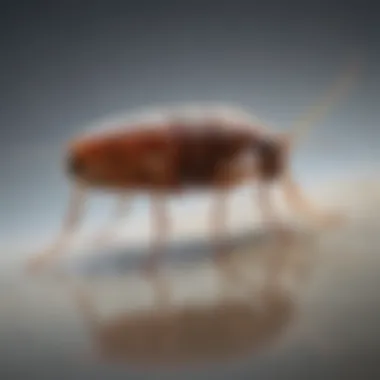

Fleas, on the other hand, thrive in multiple environments. They prefer outdoor areas, especially those with vegetation, where they can easily access hosts. However, in homes, they are commonly found in carpets, pet bedding, and areas where pets frequently rest. This habitat preference allows fleas to continually reproduce, leading to increased infestations.
A key characteristic of flea habitats is their association with pets. Homes with animals are at higher risk for flea infestations. The unique feature of fleas is their ability to lay numerous eggs, which can drop into carpets or furniture, creating persistent problems. This ability to rapidly reproduce highlights the importance of regular preventive measures for pet owners.
Health Risks and Impacts
Understanding the health risks and impacts associated with bed bugs and fleas is essential for effective pest management. These pests not only cause discomfort but can also lead to various health complications for individuals and pets alike. Awareness of bite reactions and potential diseases can help homeowners take necessary precautions. The ability to identify these risks contributes to a more comprehensive strategy for controlling and preventing infestations.
Allergic Reactions
Bed Bug Bite Reactions
Bed bug bites can provoke significant allergic reactions in individuals. The body's immune response to bed bug saliva often results in localized swelling and redness. For some, this may escalate to intense itching or even hives. The key characteristic of these reactions is their variability; not everyone will react the same way. This unpredictability can make it challenging to identify the presence of bed bugs, as some individuals may not show visible symptoms.
In terms of advantages, recognizing these reactions can help isolate a bed bug problem early. Identifying bites allows homeowners to investigate further and undertake measures to address the issue promptly. However, the disadvantage lies in the confusion it can cause among individuals who may mistake bed bug bites for other insect bites or skin ailments.
Flea Bite Reactions
Flea bites, in contrast, tend to create immediate irritation. The bites often appear as small red dots, usually raised, on the skin. Fleas can bite multiple times in a row, leading to an intense itching sensation that can be very uncomfortable. One notable aspect of flea bites is their propensity to affect not only humans but also pets, creating a widespread issue in homes with animals. This common occurrence underlines the importance of early detection and treatment in controlling flea populations.
The primary benefit of understanding flea bite reactions is the swift recognition of an infestation. Homeowners can quickly identify potential sources of flea activity, especially in areas where pets sleep or frequent. However, a drawback may be the discomfort caused by itching and scratching, which can lead to secondary skin infections if not managed properly.
Potential Disease Transmission
Bed Bugs and Disease Risks
Although bed bugs are primarily known for their bites rather than disease transmission, there is potential for them to carry pathogens. Research indicates that bed bugs can harbor various bacteria and viruses without necessarily transmitting them to humans. The key characteristic here is the lack of direct disease transmission in most cases, yet their existence poses a risk of secondary infections from scratching bite areas. Understanding this risk gives homeowners insight into maintaining personal hygiene while managing infestations.
The benefit of recognizing these disease risks helps in establishing a basic understanding that while bed bugs do not pose the same health risks as other pests, vigilance remains essential. However, the disadvantage is that some may underestimate the importance of thorough removal processes due to a belief that bed bugs do not spread disease effectively.
Fleas and Disease Risks
Fleas, on the other hand, are known vectors for several diseases. They can transmit conditions like plague and typhus, as well as act as hosts for tapeworms. This characteristic adds a layer of urgency to flea management. The role of fleas in disease transmission is well documented, making them a greater concern for many households.
The advantage of recognizing the health risks associated with fleas allows homeowners to enforce effective control measures. Understanding the broader implications of a flea infestation provides a strong motive for immediate action. However, the disadvantage lies in the alarming nature of these potential diseases, which may cause panic rather than informed and measured responses.
Understanding the differences between bed bugs and fleas is crucial to developing effective pest management strategies, ensuring that your home remains safe and healthy.
Effective Prevention Strategies
Understanding how to prevent infestations of bed bugs and fleas is crucial for maintaining a healthy living environment. Prevention strategies play a significant role in addressing issues before they escalate. By being proactive, one can save time, money, and effort that would otherwise be spent on treatments. Effective pest management not only protects physical spaces but also promotes overall well-being and peace of mind for residents. Strategies good for both pests complement one another, helping to create a comprehensive approach to pest control.
Preventive Measures for Bed Bugs
Inspection Techniques
Inspection techniques focus on identifying potential bed bug infestations early on. Regular inspections can help detect bed bugs in the initial stages, allowing for swift action before they become a larger problem. The key characteristic of these techniques includes thorough checks of sleeping areas, furniture, and personal belongings. This makes them a popular choice for pest control.
A unique feature of inspection techniques is their emphasis on vigilant observation. Homeowners should look for signs such as shed skins or dark stains from bed bug excrement. One advantage of this method is that it is non-invasive and cost-effective. However, it does require diligence and possibly some training to recognize signs accurately.
Clutter Management
Clutter management involves keeping living spaces organized to reduce hiding places for bed bugs. This is important since bed bugs prefer dark and cramped spaces. The primary characteristic of clutter management is its focus on simplicity. Keeping spaces tidy can significantly lessen the likelihood of bed bug infestations.
This method encourages regular cleaning and decluttering. Its unique feature lies in fostering an environment that is less appealing to pests. One benefit is that it often leads to an overall tidier home. However, managing clutter can be challenging for busy households, as it requires consistent effort to maintain order.
Preventive Measures for Fleas
Pet Treatment and Prevention
Pet treatment and prevention strategies are focused on ensuring that household animals do not contribute to flea infestations. This often includes regular use of flea medications and baths for pets. The key characteristic of this approach is the direct involvement of pet care. This makes it a beneficial choice for households with animals, as it directly targets the primary source of fleas.
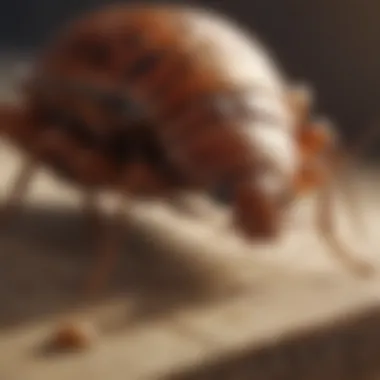
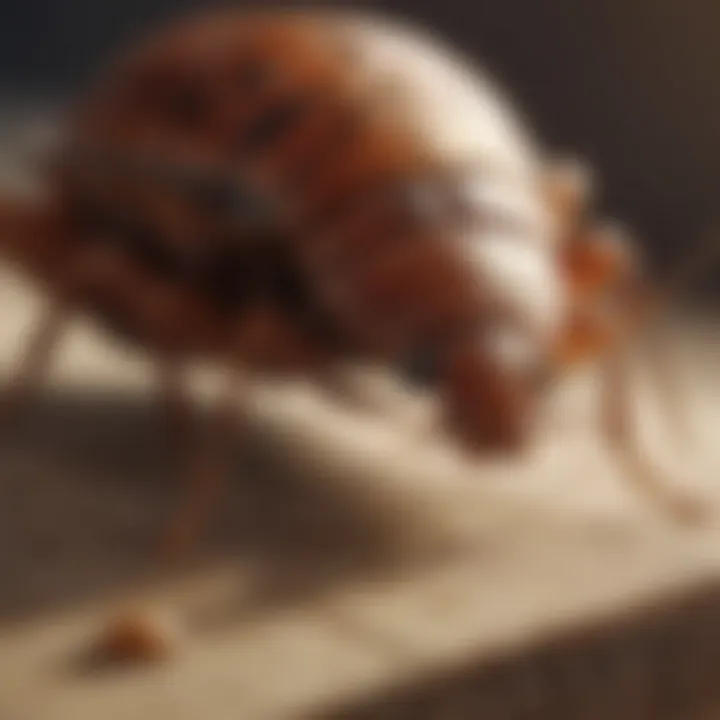
A unique feature of this strategy is the routine nature of the treatment. Regular preventative care creates a barrier against fleas effectively. One significant advantage it carries is that it not only protects pets but also minimizes the risk of infestation within the home. However, pet owners must be diligent, as neglecting treatments can quickly lead to fleas reinfesting both pets and living spaces.
Yard Management Tactics
Yard management tactics involve maintaining outdoor spaces to prevent flea populations from thriving. This strategy underscores the importance of a holistic approach to pest control. The key characteristic of yard management is its preventative aspect, focusing on creating an inhospitable environment for fleas.
Unique features of this strategy include regular lawn maintenance, removal of debris, and treating areas where pets frequently play. This helps to reduce the chances of flea infestation significantly. The advantage of yard management is a cleaner and safer outdoor space while deterring flea populations. However, it requires ongoing commitment and awareness of yard conditions throughout the seasons.
By integrating these prevention strategies into daily routines, homeowners can effectively reduce the risk of both bed bugs and fleas.
Ultimately, knowledge about effective preventive measures leads to a more significant long-term impact on pest control efforts.
Treatment Options
Treatment options play a crucial role in managing pest infestations effectively. Understanding these options helps homeowners make informed decisions. It allows them to address specific issues related to bed bugs and fleas. This section examines the methods available, detailing their benefits and potential drawbacks. Different treatment strategies suit different circumstances, and recognizing these can lead to more successful outcomes.
Bed Bug Treatment Methods
Chemical Treatments
Chemical treatments are among the most widely used methods for combating bed bug infestations. They often involve various insecticides designed to kill bed bugs at different life stages. One of the key characteristics of chemical treatments is their effectiveness. Many products can swiftly reduce bug populations when used correctly. They are generally considered beneficial because they provide quick and extensive coverage of the targeted area.
Popular chemical treatments include pyrethroids and neonicotinoids. These compounds interfere with the nervous systems of bed bugs, leading to their demise. It's important to note, however, that some bed bugs have developed resistance to certain chemicals, which can reduce effectiveness over time. Additionally, safety concerns arise with chemical use, especially in homes with pets or young children.
In summary, chemical treatments can be advantageous due to their speed and coverage but pose risks regarding resistance and safety. Homeowners must weigh these factors when choosing a treatment plan.
Non-Chemical Remedies
Non-chemical remedies offer an alternative for those seeking to avoid synthetic chemicals. These methods include heat treatment, steam cleaning, and the use of diatomaceous earth. A key characteristic of non-chemical remedies is their environmental friendliness. Many homeowners favor them as they present fewer health risks and are safer for households with sensitive individuals.
Heat treatment is particularly effective. It raises the temperature in an infested area high enough to kill bed bugs, including their eggs. This method can be highly successful, but it requires careful execution. On the other hand, diatomaceous earth works by dehydrating insects through microscopic sharp edges, causing them to die slowly after contact.
While non-chemical remedies offer a proactive approach, they can be labor-intensive and may not achieve instant results. Homeowners should consider these aspects for a balanced treatment strategy.
Flea Treatment Methods
Home Treatment Solutions
Home treatment solutions are accessible options for flea control, allowing the homeowner to tackle infestations at their convenience. Key characteristics of these solutions include ease of application and cost-effectiveness. Many products are available in stores, such as sprays, powders, and flea traps. Homeowners can apply these treatments in their living spaces, addressing the problem quickly.
Often, treatments like vacuuming combined with flea powders can remove fleas and their eggs effectively. When used consistently, these approaches can significantly lower flea populations. However, it is crucial to combine various treatment options for better results, as some methods may only target adult fleas, leaving larvae and eggs behind.
Professional Pest Control Services
Professional pest control services present a more comprehensive approach to managing flea infestations. These experts possess specialized knowledge and equipment that can address severe infestations more effectively than most DIY methods. One key characteristic of professional services is their customized treatment plans tailored to specific situations.
Hiring professionals can be particularly beneficial in complex cases where an infestation is beyond the capabilities of basic household solutions. They utilize industrial-grade insecticides and techniques that often result in faster and more thorough pest elimination. However, the downside is the cost associated with these services, which can be significant for a homeowner.
Thus, professional pest control services can be a highly effective option for tougher infestations, but the financial commitment is a consideration.
In summary, when tackling bed bugs and fleas, homeowners must consider both chemical and non-chemical treatment options. Weighing the benefits and drawbacks allows for a strategic approach tailored to individual needs.
End
Understanding the intricate details regarding bed bugs and fleas is paramount for effective pest management. Each pest possesses unique biological and behavioral characteristics that influence how they are controlled. By identifying key traits, homeowners can accurately diagnose infestations and apply the appropriate interventions.
Summarizing Key Differences
To encapsulate the differences, here are the crucial points:
- Physical Traits: Bed bugs are broader and reddish-brown, while fleas are smaller, dark, and more elongated.
- Feeding Behavior: Bed bugs prefer to feast on humans while they sleep, whereas fleas often target pets, relying on their blood for sustenance.
- Life Cycle: Bed bugs undergo five stages of development between egg and adult; fleas have a more complex lifecycle, including distinct stages of larvae and pupa alongside adult fleas.
It is essential to remember these differences to align strategies effectively for prevention and treatment. Failing to recognize their unique behaviors can lead to mismanagement and prolonged infestations.
Final Thoughts on Pest Management
Choosing between chemical treatments or natural remedies requires careful consideration of the environment and the specific pest involved. Promoting good practices such as washing bedding frequently, treating pets, and maintaining clean living spaces are also crucial in protecting homes.
By leveraging the information from this article, homeowners and housewives can feel more equipped to tackle these pests confidently, implementing practical strategies that suit their unique circumstances. The ultimate goal is to foster a pest-free environment through knowledge and informed decision-making.



